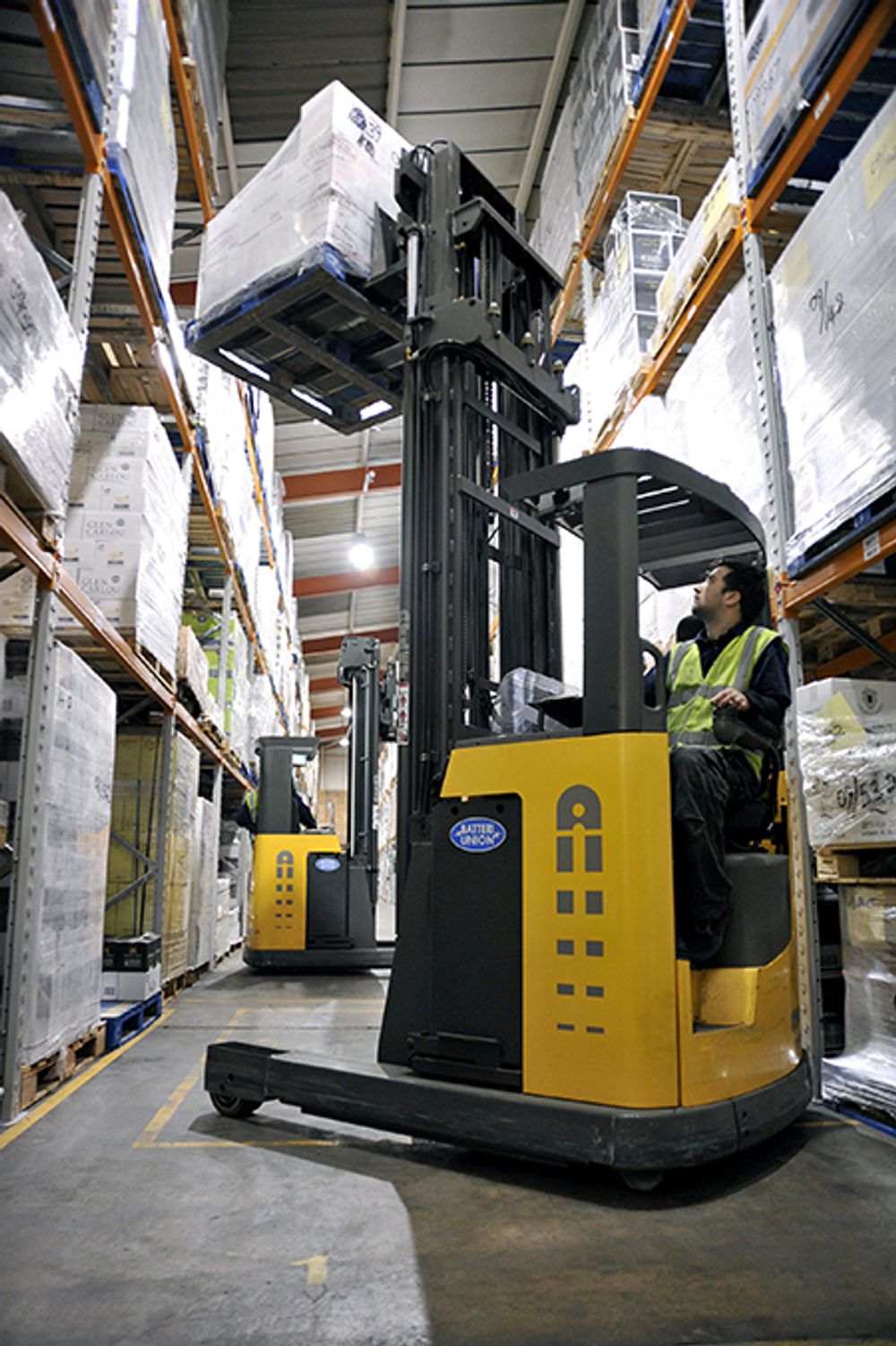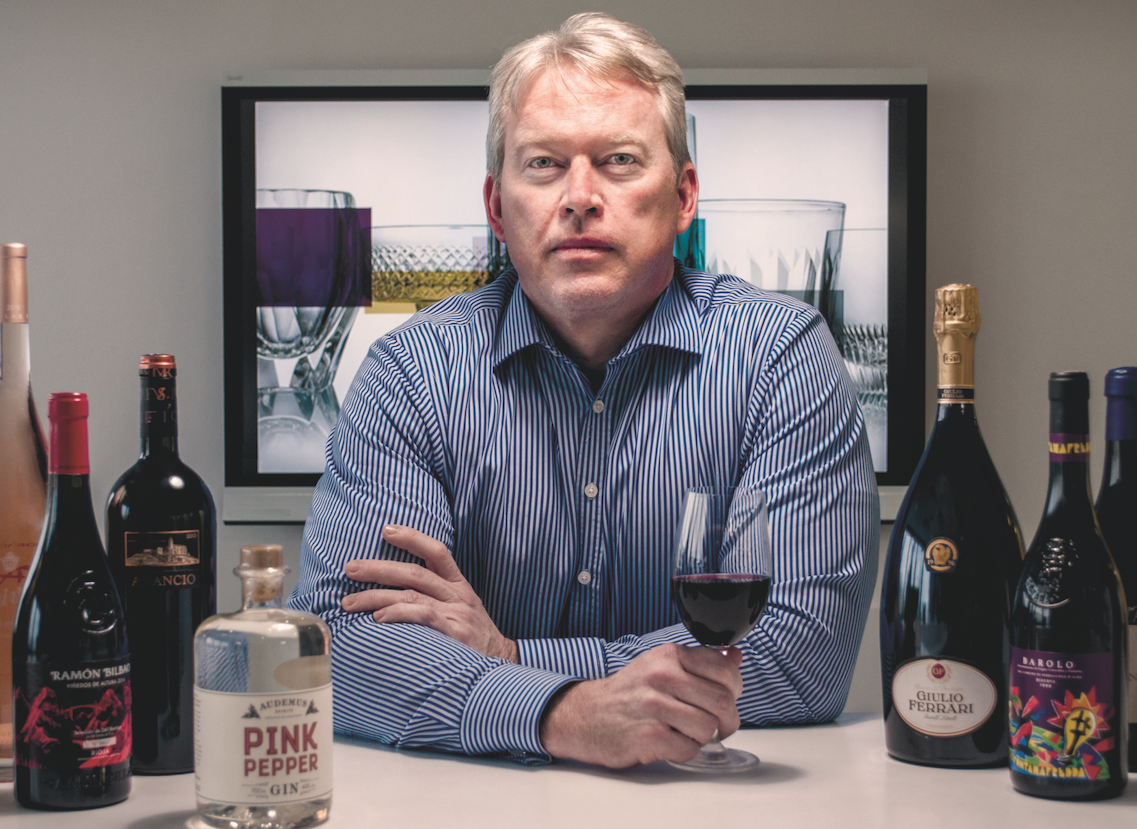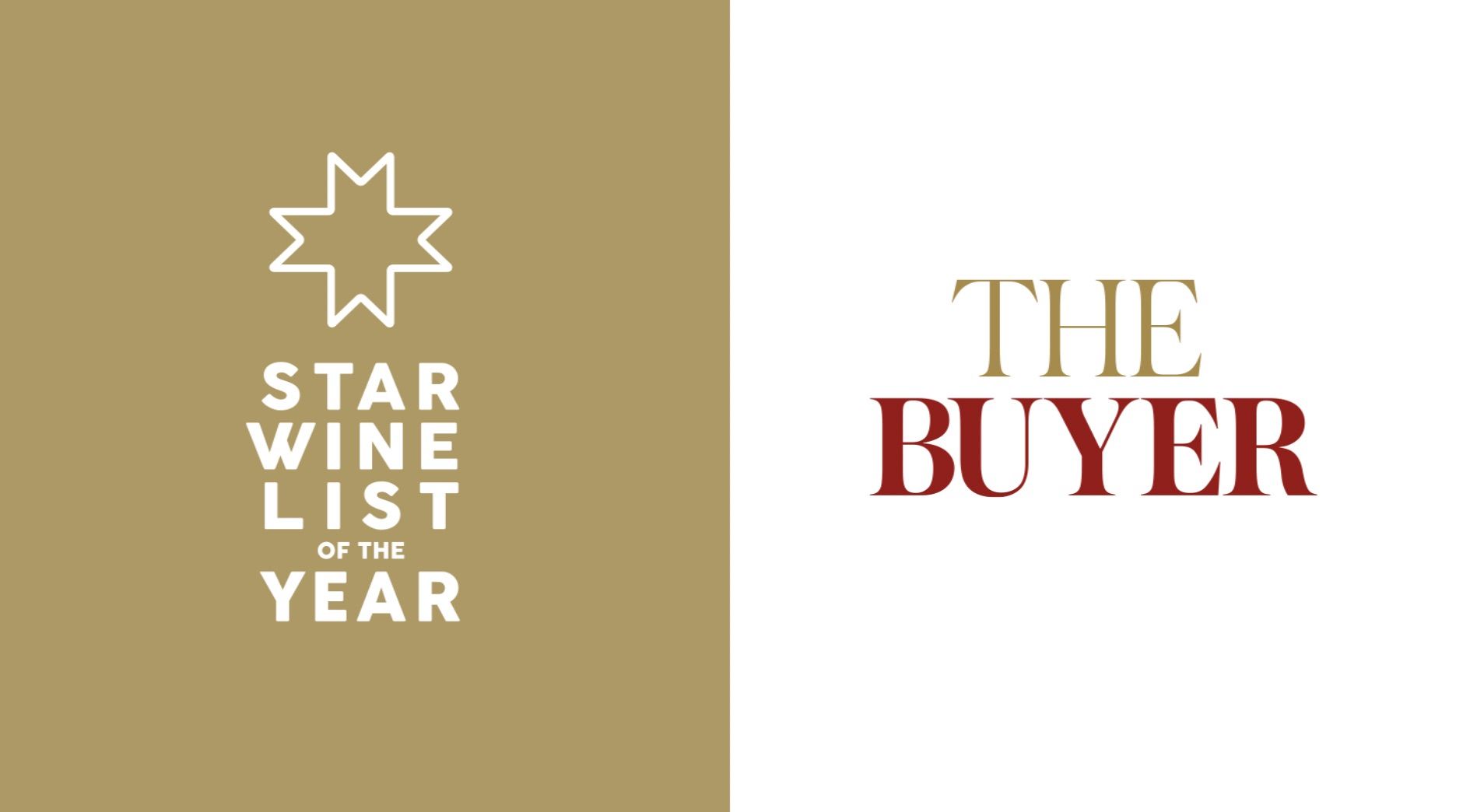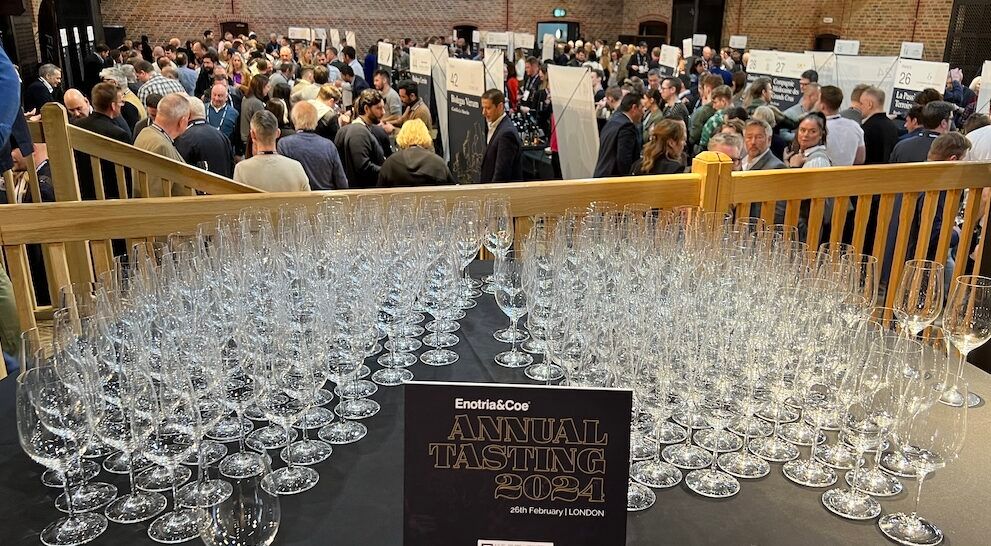Re-alining its business to put more resource, time and people behind working with more premium on-trade customers is what is helping Entoria&Coe to grow in what is still a highly challenging overall on-trade market.
Being successful in any business largely comes down to how well you have been able to pick the right opportunities to go after, whist at the same time protecting and securing your company against the challenges and so-called “bumps in the road” day-to-day trading throws at you.
It’s a model that particularly applies to the ups and downs of our major national drinks distributors. The ultimate middlemen if you like. Tasked with making sure their products are in the right customers hands at the right time.
Even if you get that equation right, you are still at the mercy of the harsh rules of the on-trade where a successful 50-strong restaurant chain might suddenly go belly up, leaving with you a lot of unpaid bills. Equally if you have the right wines and spirits and the prices to match, then there is always another 50-strong chain on the other side of the street you could quickly be doing business with.
This is very much the world that Enotria&Coe lives in. A business model that chief executive, Troy Christensen, and chief operating officer, Jon Pepper MW, are tasked with navigating the company through.

Troy Christensen says the business is now back to returning profits in line with company expectations
Which, based on their recently issued figures to June, they, and the overall E&C team, have been able to do well over the last 12 to 15 months. So much so that Christensen says the company is set to return profits for the first six months of 2019 that are as much as it achieved over the last couple of years. Although he is unable to state exactly what that figure is.
Turnover, though, for the 12 months to June 2019 was around £200m, which is up on the £150m sales figure for the last full year reported figures up to December 2017, and an enormous jump from the £128m it returned in 2015 in the midst of its acquisition of the spirits business, Coe Vintners.
Its most recent figures show what is claims is record growth of 26% in the second half of 2018 and 23% in the first half of 2019. Over which time it has been able to bring over 800 new independent on-trade customers into the business as well as add to its portfolio with new producers.
Seeing the fruits…
Christensen says the business is now seeing the results of what has been two to three years of change, integrating the Coe Vintners business, updating its systems and processes, bringing in a number of high calibre people and dealing with the disruption that was in the market last year following the collapse of Conviviality. All of which, he says, means it is now much more on a normal footing and operating with profits in line with company expectations.

Jon Pepper: E&C has seen growth and success across building both its national account and regional, local and independent customer base
It also shows just how hard the business has been working behind the scenes to arguably make up for the lost time it had to go through implementing Coe Vintners and transforming itself from a mostly wine distributor to a full wine and spirits player. It had to go through the tough times to come out of the other side.
Part of that strategy has been around implementing the right systems, particularly around automising its supply chain that will allow it to cut its overhead costs over a period of time. For the year to December 2017 it had been able to cut those costs by £1.1m to £19.8m, and said it expected to reduce them more over the last 18 months.
With the back office fixed it has clearly been able to spend 2018 and 2019 getting back on the front foot, particularly around driving and bringing new business into the company. Which has also meant being in the right place at the right time to capitalise on winning business from competitors.
After all it’s not as though the national drinks market has got any bigger in the last year. In fact the opposite is true. E&C has just found ways to take a larger share of what is ultimately a declining market, particularly in terms of wine consumption and frequency of spend.
Change in direction

Jamie’s Italian is just one of a number of high profile casual dining chains that have run into big problems and have had to announce major closures pushing their troubles down the supply chain to drinks distributors like E&C
One of the key factors in its recent growth has been a clear strategy to move its business away from relying too much on what had been a boom in the casual dining sector over the last five to eight years. Whilst it clearly made sense to be at the heat of casual dining when it was in such fantastic growth and taking over high streets and retail parks all over the country, it soon became too much of a good thing. The fall out, though, in the sector has been quicker and more dramatic than anyone could have predicted.
The reason so many casual dining chains have failed in the last couple of years are numerous, but certainly the fall out from anxious, over demanding private equity owners, coupled with a fall in consumer confidence and spending proved too much for many. Or a “vicious circle” that resulted in too much of a race to the bottom in terms of margin and quality, says Christensen
For E&C it has been an opportunity to re-assess what it is about. “Historically we had over relied on casual dining,” adds Christensen. “It was time for us to look closer at the kind of customers we were working with and look to go and play at the more premium end of the market. The kind of customers who are looking to engage better with their own customers. That’s the growth segment to be in.”
Change in focus

E&C has worked hard to win major contracts such as supplying drinks to Twickenham stadium and Wimbledon tennis championships
The focus now has to be on striving for and looking to find listings in restaurants, bars and hotels that are looking at ways to really drive their drinks category and use wine and spirits as a way to offer their customer something new, dynamic and interesting, says Pepper. The premium opportunity.
So whilst, yes, having accounts that push volume and cash flow through the company are still important, they should not be where you are investing too much time and money, and are certainly not for their for long term growth, says Christensen. “We have walked away from overtly price transaction business.”
“It’s how the drinks category is going to grow,” says Pepper. “We need to find new ways to go forward with better activation with our customers.”
A big area of growth for E&C over the last 18 months has come from a concerted push to pick up business in new sectors, particularly national accounts in travel, catering, hotels, events, and stadiums.
Over the last year, for example, it says it has picked up accounts for The Allbright, Arros, The Standard Hotel and The Curtain Hotel in London, whilst re-signing partnerships with Bistro Pierre, Aqua / Hutong, Dakota Hotels and the Gordon Ramsay Group.
Part of that strategy was bringing in new talent. The Buyer, for example, earlier this year examined the roles E&C’s two new trading managing directors, Sam Thackeray and Ant Rixon, would have on the business, hired from Bibendum last autumn to look after national account and independent and regional customers respectively.

Enotria&Coe’s two new on-trade MDs, Sam Thackeray, centre, and Ants Rixon, right with Jon Pepper MW, have helped build the national account and regional businesses
Winning the business has been one thing, but what E&C has really looked to do is offer the on ground support those national and regional players really need. So as well as Thackeray and Rixon it also brought in a number of specialist staff with the experience of working with national players, particularly around training and support around the country, says Christensen.
“We have invested in sales and marketing staff who are skilled in selling and working with high end hotels,” explains Christensen. It is having that ability to ensure you can help with the “activation” out in the market that is really making a big difference and requires “a slightly different skills set”.
Regional and local strategy
So as well as building strong relationships at head office, it is also being able to work with customers’ regional teams, and local food and beverage managers and sommeliers, says Christensen. “It’s a way of really helping those national accounts and add value to those relationships,” he adds.
It has recently, for example, just completed its first year supplying wine and spirits to the Wimbledon tennis championships. An opportunity to really put to test the work that has gone behind the scenes to make sure its computer and response systems are as robust as possible. Particularly around delivering just in time orders and being flexible enough to cope with last minute changes to deliveries as well as peaks and troughs in demand due to the Wimbledon weather. Roofs over Centre Court or not.
Pepper says its growth has come in two main areas: success with more national accounts across more sectors; but also being able to pick up a lot of independent business as well, particularly with gastro pubs and local restaurants. Outlets that are looking to offer something new, different and engaging to their customers and see wine and spirits as a way of doing that, adds Pepper.
Future disruptions

I want it and I want it now. Wine distributor need to work out how to become more part of the growth in on demand delivery from restaurants
Christensen says future demands on the business to be able to react quicker and be even more flexible in the way it works will be what it needs to get right in the coming years. It’s only a matter of time, he adds, that the wine distribution business is going to be hit by disruptive technology that will change the way that restaurants and customers want to order and have their drinks delivered. The on demand culture now so common with services such as Deliveroo, will be coming down the line in drinks distribution too, he says. Particularly so at the premium end of the on-trade.
A recent study in the US by Morgan Stanley, estimates home restaurant delivery services could take up to 40% of the overall restaurant market by 2020, up from 7% in 2016. The equivalent of $220 billion in sales compared to $30bn now. Its research shows that 43% of the current deliveries made are replacing a meal that people would normally have gone to a restaurant to have.
The restaurant and drinks distributor sectors need to be taking action now to know how to respond, says Christensen. “We’re going to see demand for more of that digital environment. Digital implication of wine is inevitable. You have to have the right processes in place to react. It’s going to be a story of flexibility and what the market is going to expect you to deliver.”
He believes it has done what it can over the last two years to have the most up to date systems in place, down to being able to GPS track any shipment out of E&C anywhere in the country. It has also done a lot of work around scheduling to ensure its wine and drinks arrive at a time the customer can handle it.
Which is why having a business that is focused on driving and activating good quality product through its customers, rather than be distracted by transactional accounts puts E&C and the overall on-trade distribution sector in better position, he adds.
Category approach for spirits

E&C has look to drive innovation in the market by sponsoring initiatives such as London Mezcal Week
The spirits side of the business has also been key to its growth and performance, says Pepper. The gin boom shows no sign of stopping, with gin sales up another 55% in the last year. “We are seeing some positive growth in other categories, like rum, but nothing beats gin,” adds Christensen.
If he had to pick out a new spirit for special attention then it would have to be mezcal. It’s why E&C sponsored the recent London Mezcal Week and says bars are having particular success in using mezcals in cocktails, long serves and to add a twist to a traditional classic drink.
“It’s not just about delivering the product it is about having the people who can then help bars with service and ideas on how to serve it,” adds Pepper.
The need to offer that value added service is arguably more important in spirits than it is in wine where it has more exclusive agencies and producers. “We believe product is still king on the spirits side. We are also brand agnostic so we can take more of a category approach in suggesting what spirits range a particular club or bar should take on,” explains Pepper.
Again here the regional approach can really work, not just with the local products that E&C looks to list, but how its teams can then work with bars and customers to make sure they work.
The category trends across wine are still very much around the demand for lighter, lower abs, more refreshing wine styles. Which is why Italian whites are so popular, says Pepper. As are indigenous and local varieties that help sommeliers look for wines they can recommend and tell a story about.
E&C has over the last year spent a lot of time revamping and reworking its French range and is seeing good success for Crémant. “English wine is also doing well. Hattingley is booming for us and English wine is proving to be very successful by the glass,” said Pepper.
Deal or no deal

E&C is taking steps now to be ready for a no deal Brexit by getting its Christmas stock in before the October 31 Brexit deadline
The threat of a no deal Brexit on October 31 is also coming up fast, but Christensen and Pepper are confident the business has already taken the steps it can, as far it can, to cope. Christensen says at least this time they know how to plan, having taken on 50% extra stock before the previous Brexit deadlines at the end of March and then April 12 and has its currency hedged for the long term.
It is ready to do the same again, but with Christmas also coming up fast it is taking steps to “secure” its festive stock is in place before the October 31 Brexit deadline, says Pepper.
Christensen just wants the whole saga put to bed: “We have had three years of disruption which has inhibited investment and hit consumer confidence. We just need clarity.”
Drawing a line under Brexit would certainly allow businesses like E&C to concentrate on really making the most of new emerging growth opportunities. Like wine in a can and alternative packaging. He expects more national stadiums and other event locations to follow Twickenham and Glastonbury’s lead and ban plastic from their grounds.
“This is why wine needs to be open to new ideas and an engaged consumer,” says Christensen.
Which, coincidentally, is very much what E&C’s business mantra is all about for the months and years ahead.


































